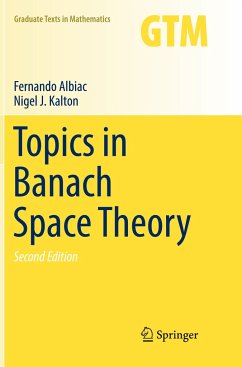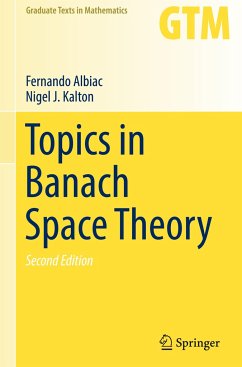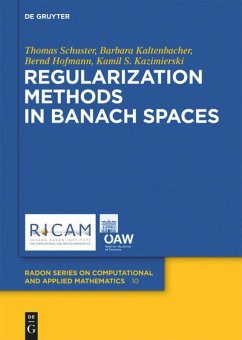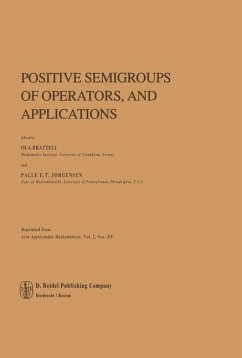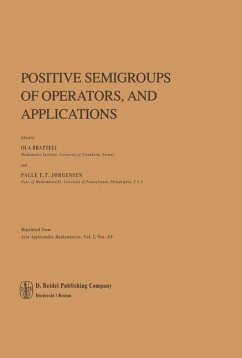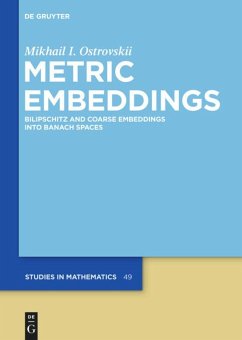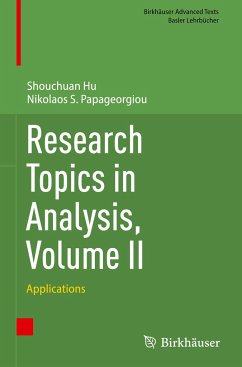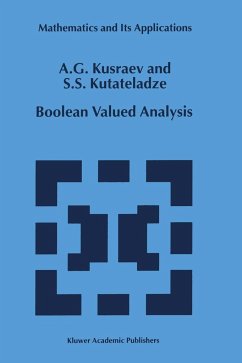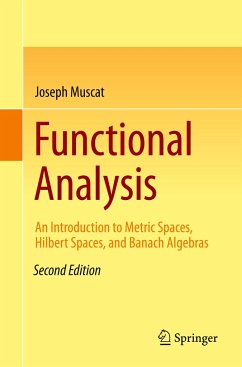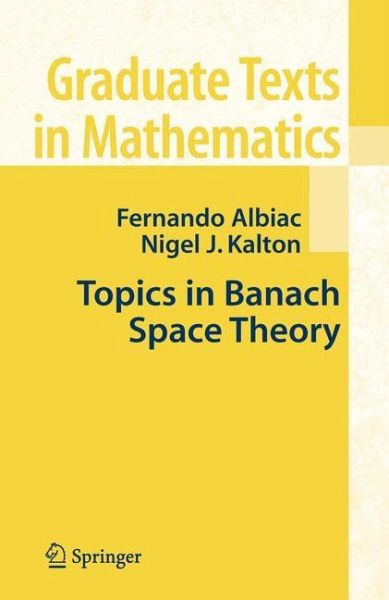
Topics in Banach Space Theory
Versandkostenfrei!
Versandfertig in 6-10 Tagen
48,99 €
inkl. MwSt.
Weitere Ausgaben:

PAYBACK Punkte
24 °P sammeln!
This book emphasizes the isomorphic theory of Banach spaces and techniques using the unifying viewpoint of basic sequences. Its aim is to provide the reader with the necessary technical tools and background to reach the frontiers of research without the introduction of too many extraneous concepts. Detailed and accessible proofs are included, as are a variety of exercises and problems.
This book grew out of a one-semester course given by the second author in 2001 and a subsequent two-semester course in 2004-2005, both at the University of Missouri-Columbia. The text is intended for a graduate student who has already had a basic introduction to functional analysis; the aim is to give a reasonably brief and self-contained introduction to classical Banach space theory. Banach space theory has advanced dramatically in the last 50 years and we believe that the techniques that have been developed are very powerful and should be widely disseminated amongst analysts in general and not restricted to a small group of specialists. Therefore we hope that this book will also prove of interest to an audience who may not wish to pursue research in this area but still would like to understand what is known about the structure of the classical spaces. Classical Banach space theory developed as an attempt to answer very natural questions on the structure of Banach spaces; many of these questions date back to the work of Banach and his school in Lvov. It enjoyed, perhaps, its golden period between 1950 and 1980, culminating in the definitive books by Lindenstrauss and Tzafriri [138] and [139], in 1977 and 1979 respectively. The subject is still very much alive but the reader will see that much of the basic groundwork was done in this period.





